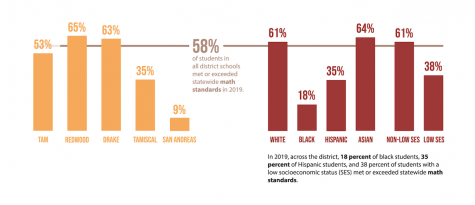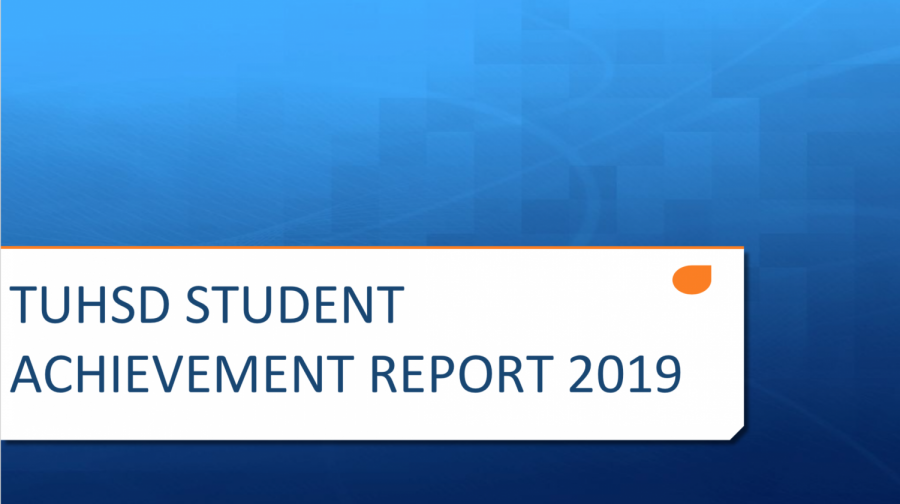District publishes 2019 Student Achievement Report
Nov 7, 2019
The recently released 2019 Tamalpais Unified High School District (TUHSD) Student Achievement Report revealed academic differences between district schools, as well as a significant achievement gap.
Superintendent Dr. Tara Taupier presented the report at a board meeting on September 24. Taupier worked with data analyst Alina Hartel, the district office, and schools to compile the data, but assembled the majority of report herself.
The report synthesizes the results of the annual districtwide California Assessment of Student Performance and Progress (CAASPP) test, taken by 11th graders. Other data included in the report are common assessments such as the SAT, ACT, Advanced Placement (AP) tests, and statistics such as graduation rates. Additionally, the report highlights the “potential next steps to improve the learning of all students while narrowing the opportunity and resultant achievement gaps that persist in our district.”
According to Taupier, the report serves as a way to assess the effectiveness of the district’s current priorities and their impact on academic progress. The achievement assessment presented the CAASPP scores of 11th graders district-wide. The test evaluates student abilities in two sections: English Language Arts (ELA)/Literacy and Math.
According to Hartel, about 95 percent of the TUHSD junior class took the 2019 CAASPP test.
The 2019 data reported that 72 percent of Tam juniors met or exceeded ELA/Literacy standards, while 53 percent met or exceeded the math standards. Tam’s ELA success rate is one percent above the district average of 71 percent. TUHSD had a collective math success rate of 58 percent, placing Tam significantly behind the average.

However, the most apparent score discrepancies are seen under socioeconomic status (SES) and ethnicity. In both sections, students who identified as African American and Hispanic scored significantly lower than their white peers. Because Hispanic is considered an ethnicity applicable to people of any race, the data for Hispanic students as shown in the report accounts for only non-white students who identified as Hispanic.
These results have been somewhat consistent over the past few years, and district staff is using the data to address the larger problem at hand. Simultaneous with district-level discussions, the report is put to use within each high school.
“The next steps within schools [are] somewhat up to administration, and each year, schools take different approaches,” Taupier said.
The district implemented programs such as Advancement Via Individual Determination (AVID) and the Tam High Success Network in an effort to address the impact that a lack of guidance or financial stability has on student performance according to Taupier. According to the program’s coordinator Suzanne Garcia, the AVID elective enlists students who are motivated, but lack access to resources, to teach concrete academic skills.
The Success Network, which currently only exists at Tam, connects disadvantaged students to on-campus support, including an adult mentor and academic tools, according to Taupier. Last year’s results were promising. “There was a significant increase in students passing, specifically in math, at the end of R1 over the previous year,” Taupier said.
Taupier said the district is “in conversation” on expanding the program to other district schools.
The report also notes the goal to officially reflect the district’s commitment to underserved students. Taupier hopes to enact both an updated TUHSD mission statement and an equity policy within the next six months.
The equity policy would “be explicit about addressing the opportunity and achievement gap” and provide the board with “direction to keep equity in mind when making resource or budgetary decisions,” according to Taupier.
Taupier said, “When a board adopts a policy, it sets a standard of importance, it gives the sense that it matters to this district.”




